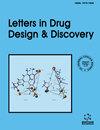大planeta Americana Extract CII-3 (PAE CII-3)通过调节SIRT1/TSC2/mTOR分子触发K562细胞衰老
IF 1.6
4区 医学
Q4 CHEMISTRY, MEDICINAL
引用次数: 0
摘要
背景:慢性髓性白血病(CML)被认为是一种影响骨髓和血液的造血干细胞疾病。目的:探讨美洲大蠊提取物CII-3 (PAE CII-3)在K562细胞衰老中的可能作用。材料与方法:分别采用CCK-8法和细胞周期法测定K562细胞的增殖和细胞周期。用SA-β-Gal染色观察K562细胞的衰老情况。采用JC-1线粒体膜电位测定试剂盒检测K562细胞线粒体膜电位。端粒酶活性用PCR法验证。RT-PCR检测沉默信息调控因子2相关酶1 (SIRT1)、TSC2和mTOR基因的转录水平。Western blot检测SIRT1、p-TSC2和p-mTOR的表达。结果:PAE CII-3各浓度(5、10、20、40、80、160µg/mL)对K562细胞增殖均有明显抑制作用,其中以80µg/mL抑制作用最强。与对照组相比,PAE CII-3显著阻断了K562细胞周期,降低了K562细胞的集落形成单位(CFU) (p <0.001)。与对照组相比,PAE CII-3显著增加了SA-β-Gal阳性染色K562细胞(p <0.001)。与对照组相比,PAE CII-3显著降低了K562细胞的线粒体膜电位和TERT基因转录(p <0.001)。SIRT1基因的转录(p <0.01)和TCS2基因(p <0.001)显著降低,mTOR基因转录(p <0.05),与对照组相比,PAE CII-3处理后K562细胞的凋亡率显著升高。PAE CII-3显著降低SIRT1的表达(p <0.01)和p- tsc2 (p <p- mtor表达上调(p <0.01),与对照组比较。结论:PAE CII-3处理可通过激活SIRT1/TSC2/mTOR信号通路引发K562细胞衰老。本研究为PAE CII-3治疗诱导慢性髓系白血病细胞衰老的机制提供了一种可能的假说。本文章由计算机程序翻译,如有差异,请以英文原文为准。
Periplaneta Americana Extract CII-3 (PAE CII-3) Triggers the Aging of K562 Cells by Modulating SIRT1/TSC2/mTOR Molecules
Background: Chronic myeloid leukemia (CML) is considered a type of hematopoietic stem cell disease that affects the bone marrow and blood. Objective: This study aimed to investigate the possible role of the Periplaneta americana extract CII-3 (PAE CII-3) in the aging of K562 cells. Materials and Methods: The proliferation and cell cycle of K562 cells were determined using the CCK-8 assay and the cell cycle assay, respectively. K562 cells were stained with SA-β-Gal to evaluate cell aging. The mitochondrial membrane potential of K562 cells was detected with the JC-1 mitochondrial membrane potential assay kit. Telomerase activity was verified using the PCR assay. The transcription of silencing information regulator 2 related enzyme 1 (SIRT1), TSC2, and the mTOR gene were evaluated with RT-PCR assay. The expression of SIRT1, p-TSC2, and p-mTOR was examined using a Western blot assay. Results: PAE CII-3 at all concentrations (5, 10, 20, 40, 80, 160 µg/mL) demonstrated obvious inhibitory effects on K562 cell proliferation, among which 80 µg/mL showed the highest inhibitory effect. PAE CII-3 significantly blocked the cell cycle and reduced the colony-forming unit (CFU) of K562 cells compared to those in the Control group (p < 0.001). PAE CII-3 markedly increased positive SA-β-Gal staining K562 cells compared to the Control group (p < 0.001). PAE CII-3 significantly reduced mitochondrial membrane potential and decreased TERT gene transcription in K562 cells compared to those of the Control group (p < 0.001). The transcription of the SIRT1 gene (p < 0.01) and the TCS2 gene (p < 0.001) was markedly decreased, and the transcription of the mTOR gene (p < 0.05) was significantly increased in K562 cells treated with PAE CII-3 compared to those of the Control group. PAE CII-3 significantly decreased the expression of SIRT1 (p < 0.01) and p-TSC2 (p < 0.001) and upregulated the expression of p-mTOR (p < 0.01) in K562 cells compared to those of the Control group. Conclusion: PAE CII-3 treatment could trigger aging in K562 cells by activating the SIRT1/TSC2/mTOR signaling pathway. This study would provide a potential hypothesis of the mechanism by which PAE CII-3 treatment induces the aging of chronic myeloid leukemia cells.
求助全文
通过发布文献求助,成功后即可免费获取论文全文。
去求助
来源期刊
CiteScore
1.80
自引率
10.00%
发文量
245
审稿时长
3 months
期刊介绍:
Aims & Scope
Letters in Drug Design & Discovery publishes letters, mini-reviews, highlights and guest edited thematic issues in all areas of rational drug design and discovery including medicinal chemistry, in-silico drug design, combinatorial chemistry, high-throughput screening, drug targets, and structure-activity relationships. The emphasis is on publishing quality papers very rapidly by taking full advantage of latest Internet technology for both submission and review of manuscripts. The online journal is an essential reading to all pharmaceutical scientists involved in research in drug design and discovery.

 求助内容:
求助内容: 应助结果提醒方式:
应助结果提醒方式:


